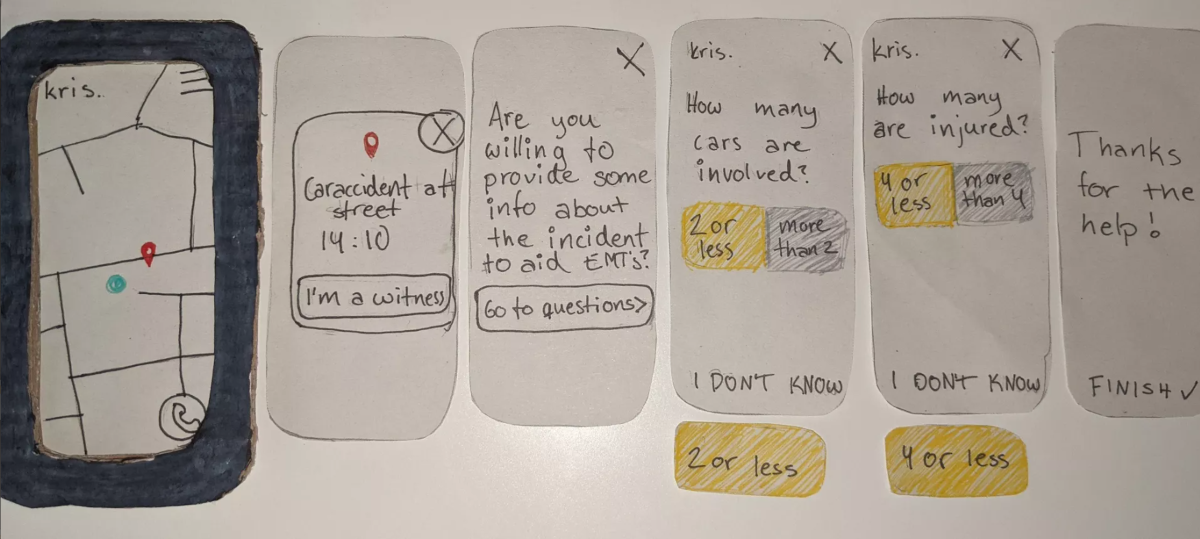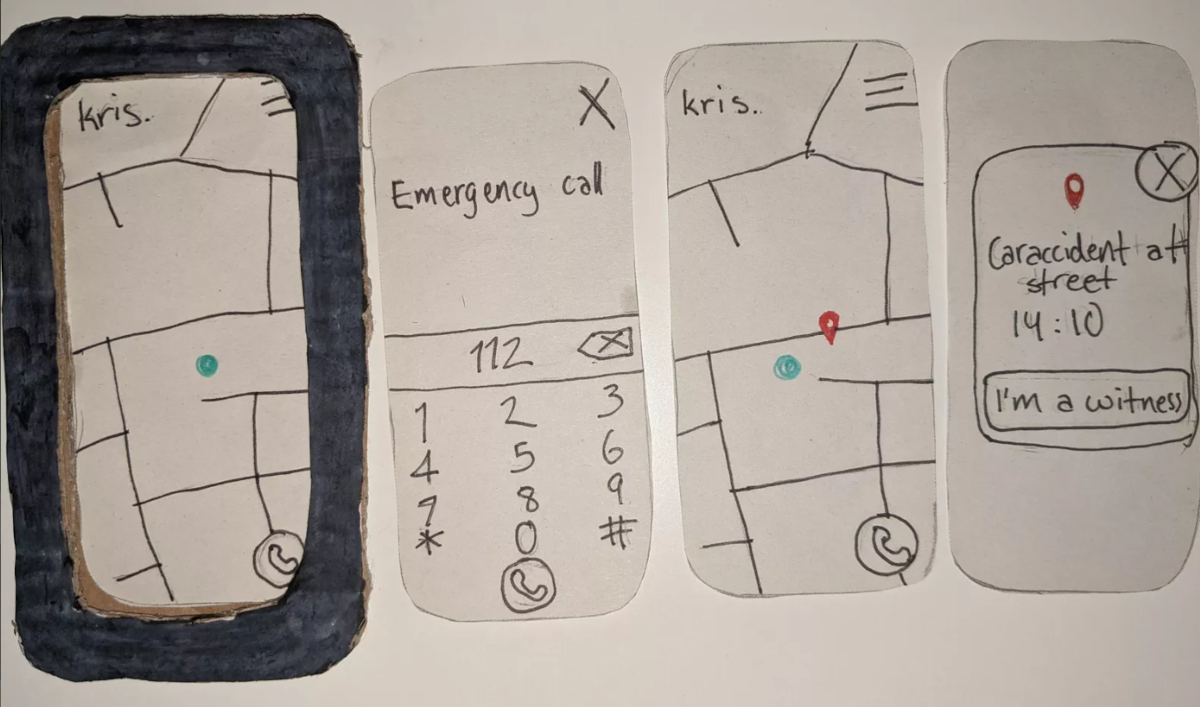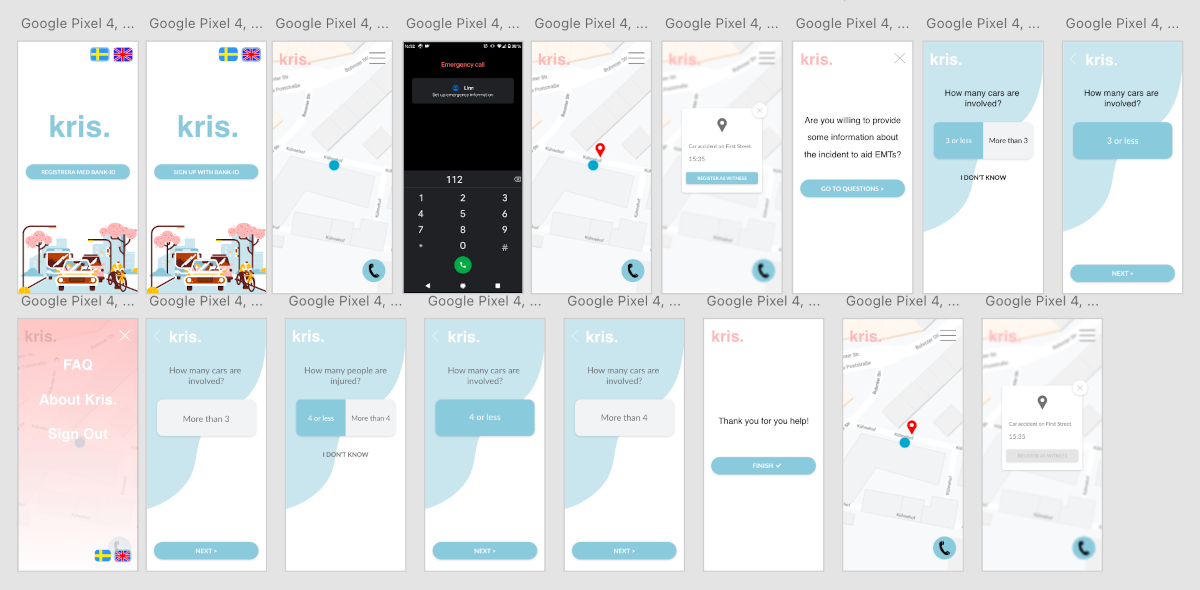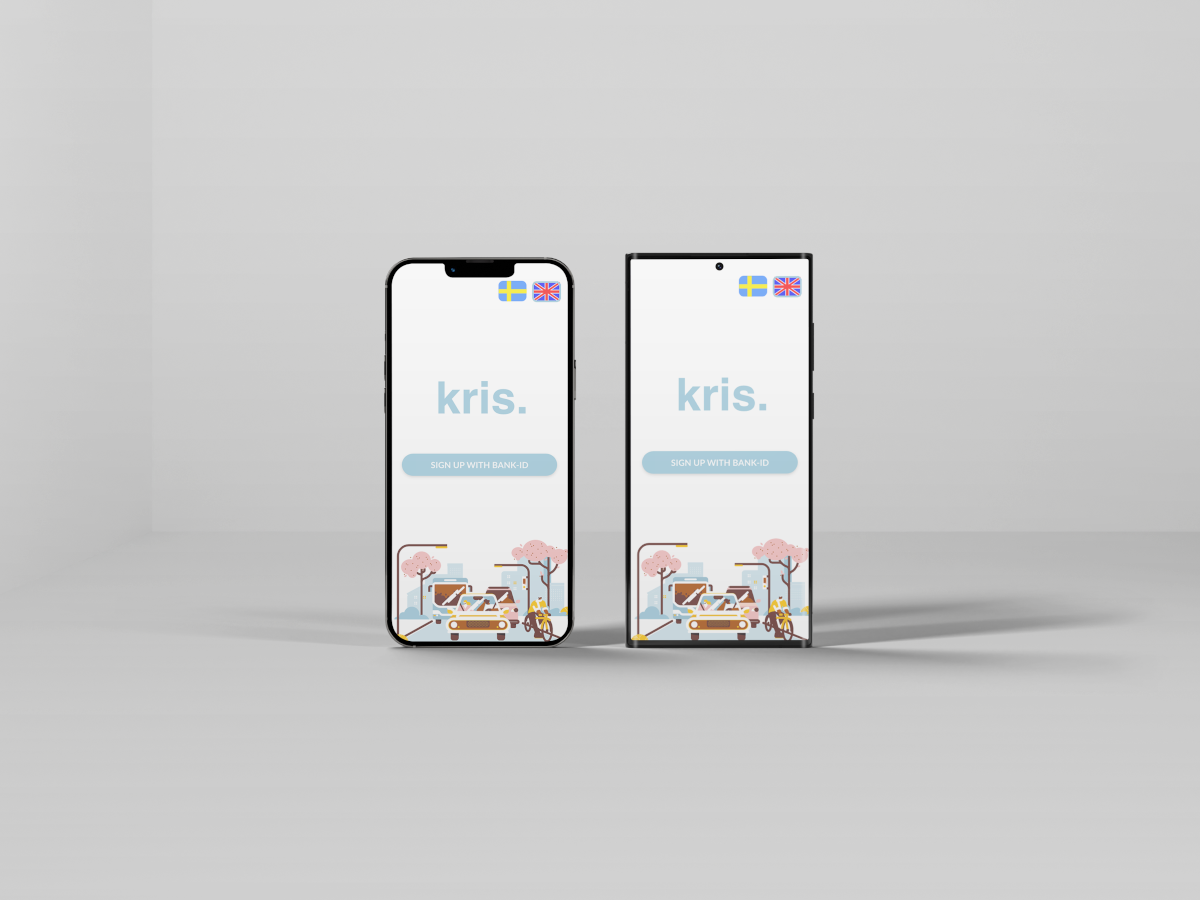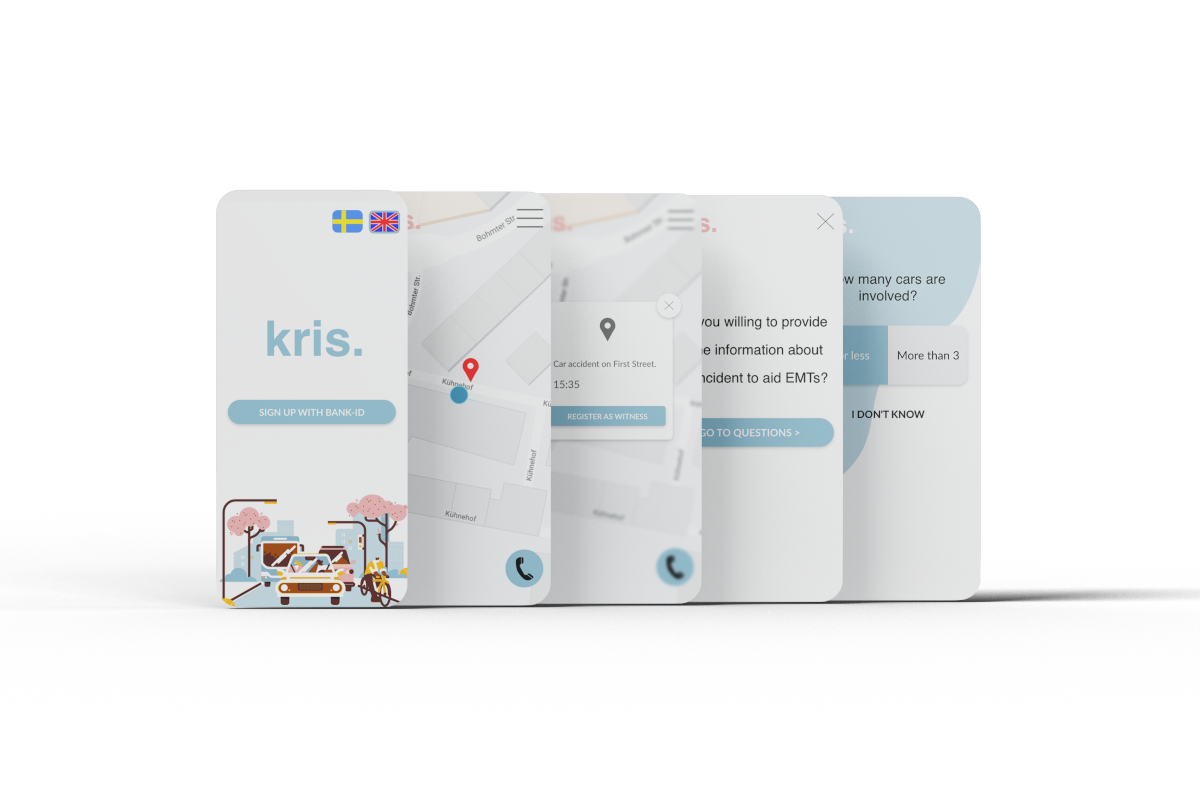MOBILE APP DESIGN 2021
Kris
UI/UX, Academic
Solo Project
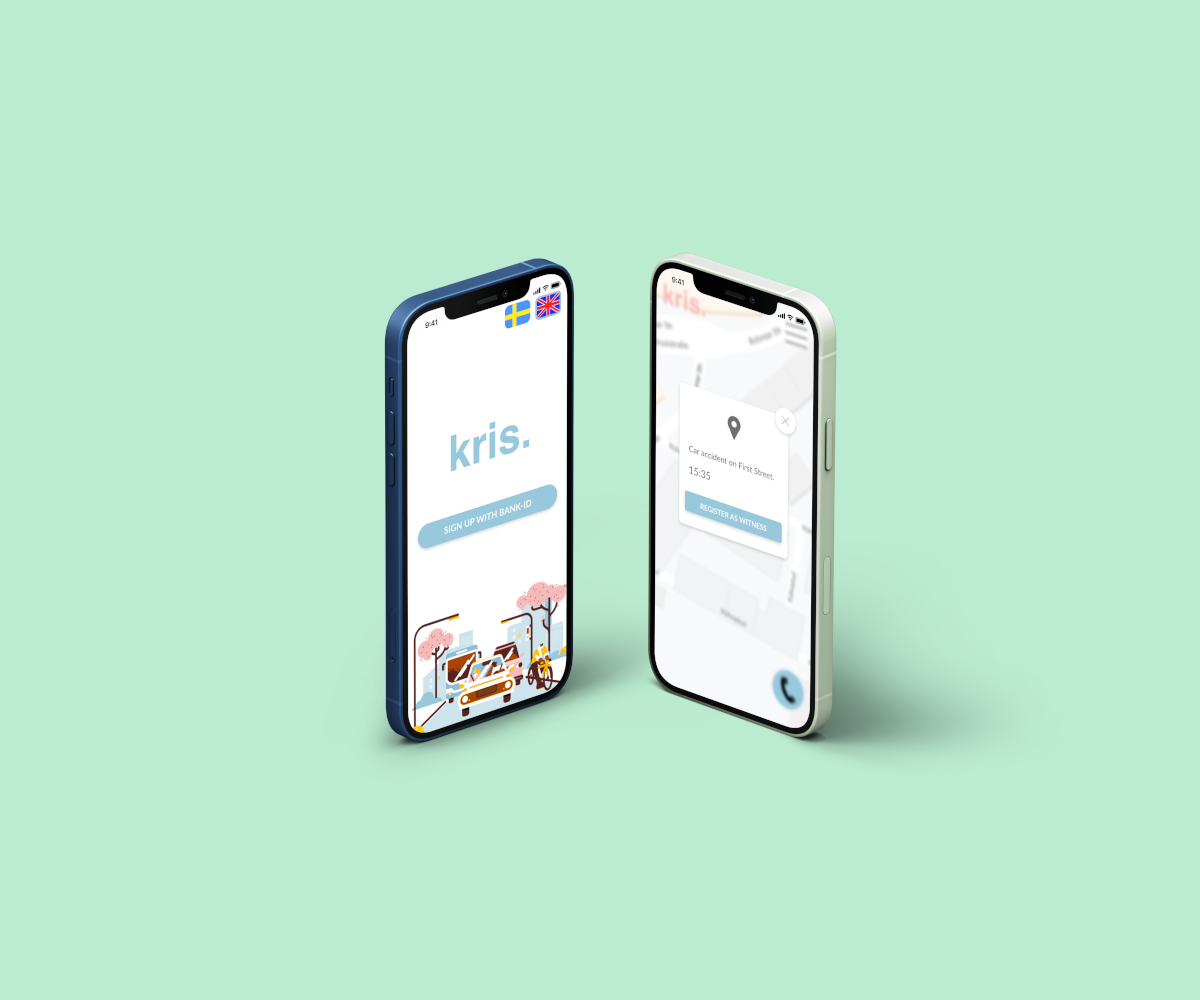
Details
Tools
Pen and Paper
Adobe XD
Time Frame
4 weeks
Methods
Brainwriting 6-3-5
Digital Prototyping
Paper Prototyping
PACT
User Research
Summary
“Kris” (aka crisis) is an app concept that helps people in crisis situations like fires or car accidents by preventing by-stander syndrome through team effort.
Task
Task Description
The task was to carry out a design project at an early stage focusing on prototype development. In a user-centered design process a digital artifact that helps save time during rescue operations was to be created.
Time Frame
4 Weeks
The Problem
I decided to focus on crisis situations related to incidents where there would most likely be witnesses.
Bystander Effect
Through doing research and reading up on how bystanders act when they’ve watched an incident happen, I came across the term “Bystander Effect”. This is a psychological phenomenon where someone believes that any one of the other people who also witnessed an incident will do or have done something already. This can result in, for example, that no one calls the authorities because they believe someone else already has.
The Solution
Concept
The main question I wanted to answer with my concept was “How can an app counteract the bystander effect?”. My target audience was people who have little to no experience in emergencies. After brainstorming concepts using the method “Brainwriting 6-3-5” I came up with an app that uses crowd-sourcing to collect information about emergency situations. Through letting users who have watched an incident happen register as a witness and answer a few questions about it, they help emergency services know what’s going on before they arrive at the scene. The way this counteracts the bystander effect is through making sure someone has called emergency services as well as letting people who aren’t sure about how to help do so. The idea is that the more data from eye witnesses the authorities have, the better and more accurate it will be.
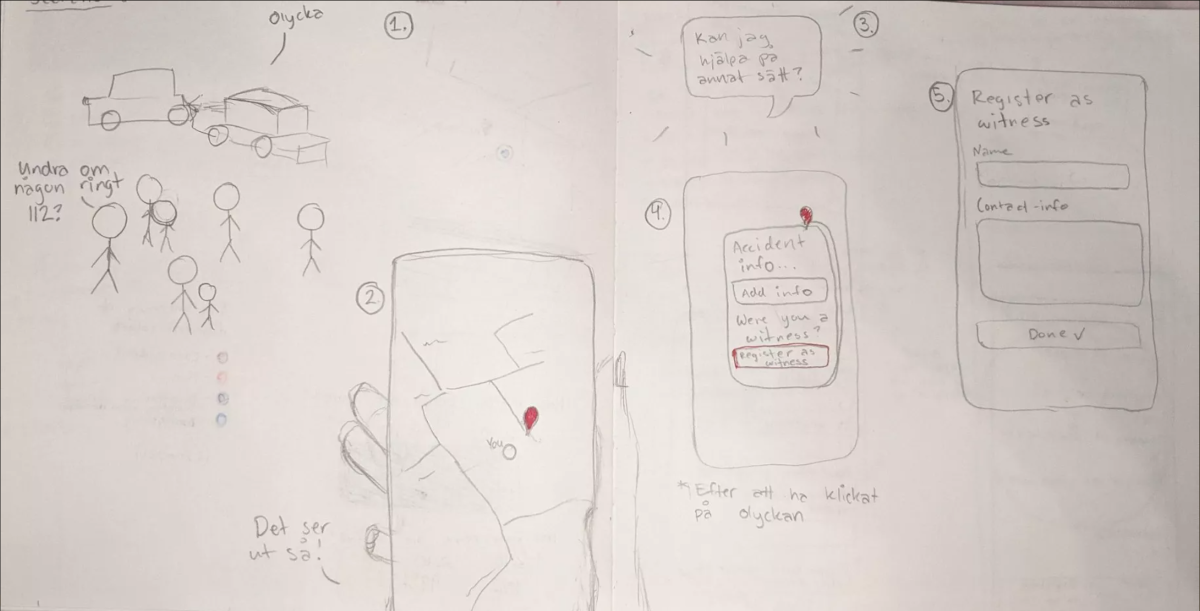
Click to view full size.
Sketch of Kris #1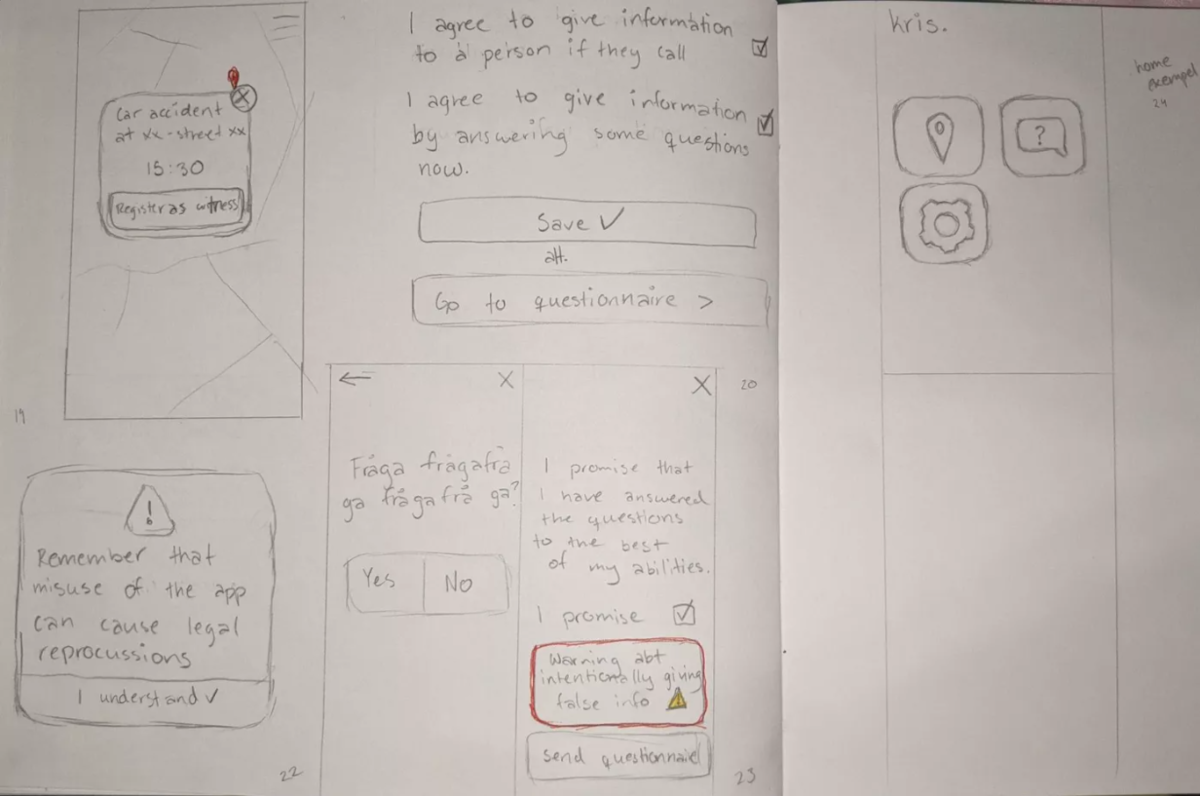
Click to view full size.
Sketch of Kris #2